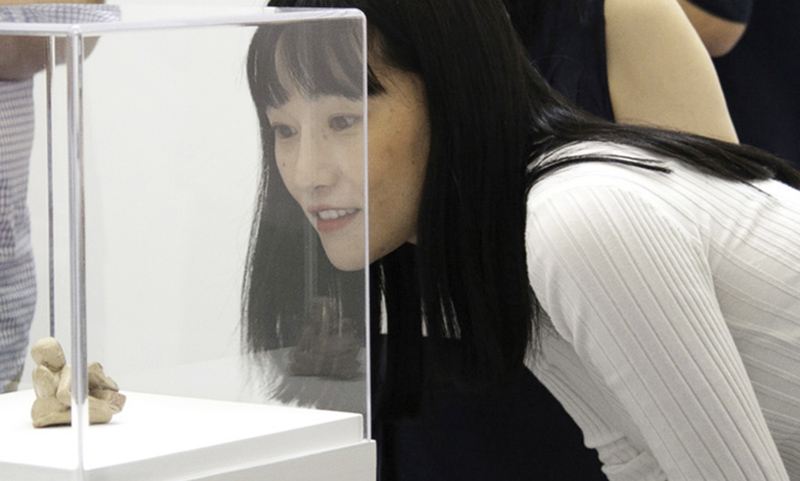
Gao Xin, a visiting postdoctoral research fellow with the Edith O’Donnell Institute of Art History, attends an institute workshop talk at The Warehouse
The fall 2018 semester will welcome the first students admitted to the master’s program in the Edith O’Donnell Institute of Art History (EODIAH). The curriculum is tailored around faculty members’ varied backgrounds and access to collections and institutions throughout the Dallas area.
The new degree, offered through UT Dallas’ School of Arts and Humanities, is a major milestone in a plan first laid out when Edith O’Donnell provided the initial gift that led to the institute’s creation in 2014. Prospective students have until Jan. 15 to apply for the inaugural class.
“This program will be part of our young but already flourishing research institute,” said Dr. Sarah K. Kozlowski, assistant director of EODIAH. “We are looking for strong undergraduate applicants with a background in art history who want to take the next steps in either their professional or academic career.”
Dr. Paul Galvez, research fellow and curriculum coordinator for the master’s program, stressed the value of their “object-based program.” Students can look forward to working closely with collections throughout Dallas and Fort Worth including the Dallas Museum of Art, the Amon Carter Museum of American Art, the Trammell and Margaret Crow Collection of Asian Art, the Nasher Sculpture Center and The Warehouse.
“This program will be part of our young but already flourishing research institute. We are looking for strong undergraduate applicants with a background in art history who want to take the next steps in either their professional or academic career. ”
Dr. Sarah K. Kozlowski,
assistant director of Edith O’Donnell Institute of Art History
The intensive 16-month program also has a unique approach to curriculum. A student’s first year will cover foundational skills and knowledge taught by faculty, and will include critical curatorial skills.
"If you're interested in art history in its broadest sense, we offer both traditional academic seminars as well as training with artworks in galleries and collections," Galvez said. "This training normally happens informally, but we are making it part of the curriculum for all our students."
Students also will take 15 hours of master's seminars covering a range of topics such as architecture and photography, many taking as their point of departure artworks and materials in area collections.
EODIAH faculty and staff are most excited about the final year practicum.
"Traditionally, the MA thesis has been exactly that — a long research paper," Galvez said. "And that's certainly one route, but what we are offering — which is unique — is a practicum that tailors art-historical writing to students’ specific projects."
Examples of alternative projects include an interview with a practicing artist, a small exhibition, or archival research.
More information on the program and forms for applying are on the EODIAH website.